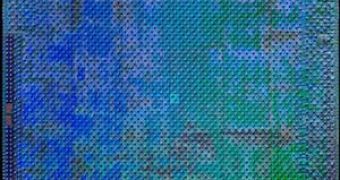AMD has missed the start so many times, that we almost got used to this state of facts. That is why the IT world has been caught by surprise with the fact that the company is considering implementing multiple physical dice GPU's in their high-end graphics series. This technology has been successfully used by Intel for the quad-core processor manufacturing, but it is still questionable whether this would also apply to graphics processors.
AMD's R600 graphics chip (also known as Radeon HD 2900) is comprised of almost 700 million transistors on a single die coating and dissipates around 160W - a huge power consumption for average performance. Nvidia's GeForce 8800 GTX is almost in the same situation, since their video card is an energy hog and it is the result of a pretty expensive manufacturing process. AMD's newer Radeon HD 3800 (RV670) delivers superior performance at lower manufacturing price and power consumption, due to the company having switched to the 55-nanometer process technology.
AMD is considering announcing their ATI Radeon HD 3800 X2 graphics board running two ATI RV670 processors at the Consumer Electronics Show next year. This would be the first multi-GPU board built by ATI in a pretty large period of time, and is supposed to set the standards for the consumer market. But this is not the big surprise AMD is cooking in their graphics product group laboratory.
There are only a few things that have leaked out regarding AMD's secret product codenamed ATI R700. Rumor has it that this new generation of graphic chips may not be focused on the multi-GPU concept, but on the multi-chip module technology. That is how Intel managed to achieve spectacular results with their quad-core division. Since monolithic microprocessors would have been expensive to manufacture, the manufacturer puts two physical dice onto a single piece of substrate.
The current technology allows graphics processors in multi-GPU configuration to communicate using special interfaces, such as ATI's CrossFire or Nvidia's SLI. These two interconnectivity solutions provide lower data transfer rates than the PCI Express 2.0 x16 bus (about 8GB/s in each direction). But the best interconnectivity results can be achieved using the Rambus' Flex IO chip-to-chip interface that can feature speeds of 76.8GB/s (32GB/s read and 44.8GB/s write).
This is what we might get if things at CES go well. AMD officials refused to give further details about their new ATI R700. We can hardly wait for the next wave of rumors to emerge from the AMD labs.

 14 DAY TRIAL //
14 DAY TRIAL //